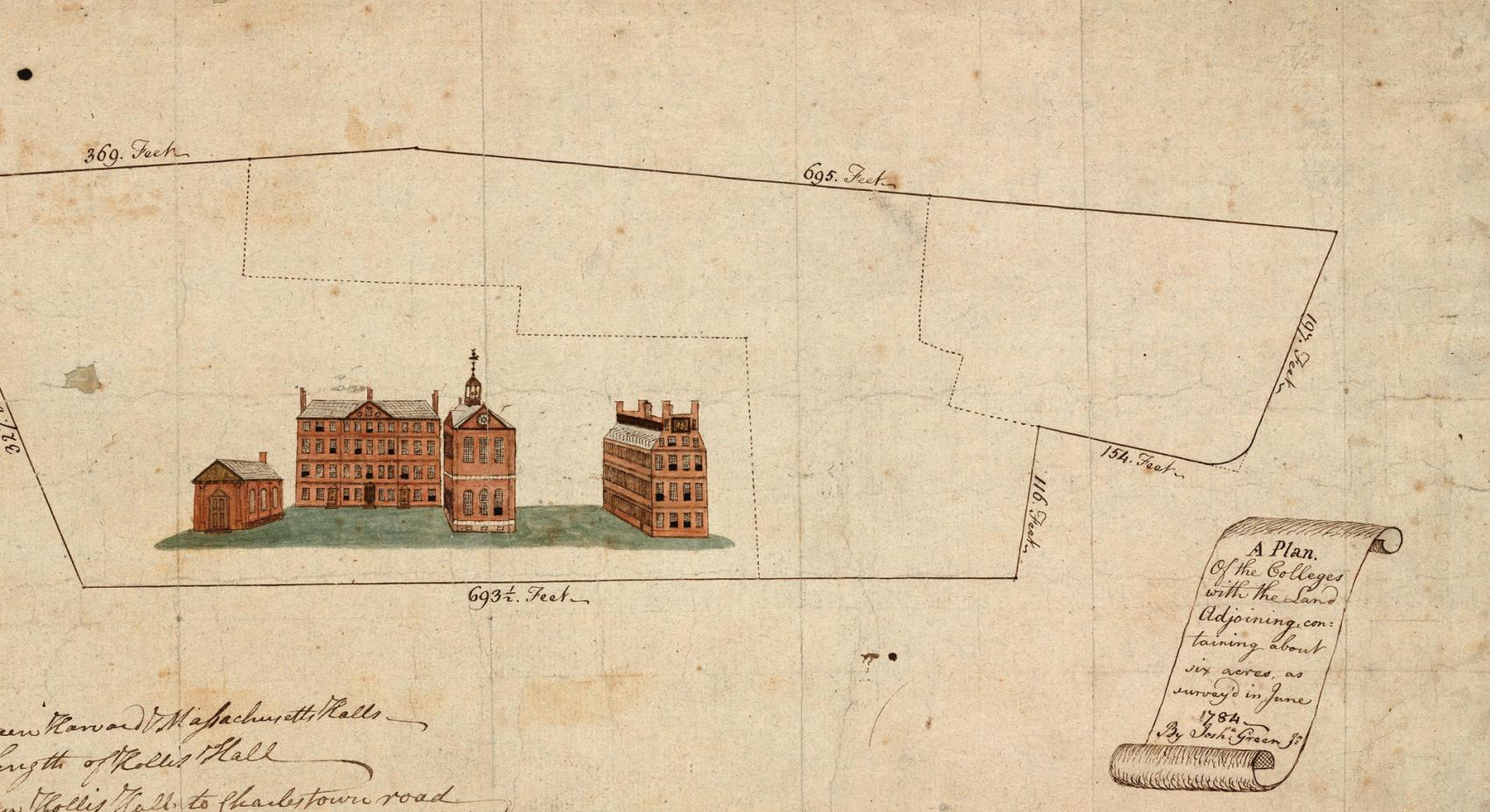
Harvard University Archives: Celebrating American History
admin
- 0
The Harvard University Archives serves as a treasure trove of history, preserving the legacies and stories of individuals whose contributions have shaped not only Harvard but also America itself. Within these storied walls, visitors can uncover rare archival exhibits, including a poignant letter from John F. Kennedy to his fellow Harvard classmates and essential correspondence from W.E.B. Du Bois. Each piece within the archives tells a unique story, capturing moments in Harvard history and illuminating the depth of the Harvard community. By exploring these artifacts, one experiences the intersection of education, culture, and their impact on society. The ongoing commitment to archiving these narratives ensures that Harvard’s rich heritage continues to inspire future generations.
Known as a historical reservoir, the archives of Harvard University play a vital role in documenting the past, offering insights into significant events and figures from a renowned academic institution. Artifacts such as a correspondence from John F. Kennedy and letters from notable intellectuals like W.E.B. Du Bois reveal the intricate tapestry of Harvard history. The archival exhibits, showcasing various community narratives, highlight the diverse experiences that have shaped both the University and broader American culture. By engaging with these collections, visitors are invited to explore and reflect on the stories that form the backbone of Harvard’s legacy. This multidimensional archive stands testament to the dynamic interplay between higher education and societal evolution.
The Significance of Archival Exhibits in Harvard’s History
Archival exhibits, such as the currently running ‘Archives Inside Out’ at Harvard University, serve as vital connections to the history of both the institution and America. By showcasing unique objects pulled from the Harvard University Archives, these exhibits tell compelling stories of cultural and academic significance. Items like John F. Kennedy’s letter to his classmates capture pivotal moments while simultaneously reflecting broader societal issues. These archives do not simply preserve history, they actively engage the Harvard community and visitors in understanding the evolution of thought and culture throughout the years.
Moreover, archival exhibits allow audiences to explore diverse narratives that contribute to Harvard’s storied past. For instance, letters from influential figures like W.E.B. Du Bois not only highlight the complexities of race relations but also embody the academic discourse fostered at Harvard. The initiative to curate items that resonate with both societal change and personal stories encapsulates the essence of Harvard’s mission — to be a catalyst for thoughtful engagement and inquiry in the arts and culture.
Exploring the John F. Kennedy Letter at Harvard
The handwritten letter from John F. Kennedy to members of the Harvard College Class of 1940 is more than just a piece of paper; it is a window into the charisma and intellect of a future president during his formative years. Discovered by archivist Pam Hopkins, this unique item brings to life the personal connections forged among classmates at Harvard. The casual tone of Kennedy’s correspondence offers insight into his character, intertwining personal anecdotes with reflections on education and community, making it a significant addition to the Harvard University Archives.
Beyond its historical importance, the Kennedy letter invites discussions on leadership and belonging within the Harvard community. It encourages current students and scholars to reflect on their own journeys while fostering an appreciation for the university’s role in shaping leaders throughout history. Pieces like this letter emphasize the power of personal stories in understanding the larger narrative of America’s political and cultural landscape.
W.E.B. Du Bois Archives: A Jewel in Harvard’s Collection
The letter from W.E.B. Du Bois to his mentor, Albert Bushnell Hart, exemplifies the rich tapestry of voices found within the Harvard University Archives. This correspondence not only underscores Du Bois’s intellectual engagement but also serves as a reminder of the pivotal discussions surrounding race relations in America during the early 20th century. By preserving such materials, the archives enable contemporary academics to explore the intricate dynamics of race, culture, and ideology, which remain relevant in today’s society.
Furthermore, the W.E.B. Du Bois archives represent a commitment to inclusivity within the Harvard collection. As archivists delve into materials that highlight underrepresented voices, they foster a richer understanding of history that resonates with the diverse Harvard community. This archival focus bridges past and present, reinforcing Harvard’s mission to cultivate a scholarly environment that honors a spectrum of narratives and experiences.
The Role of Harvard Community Stories in Archival Work
Community stories play an essential role in shaping the identity of Harvard University, as evidenced by the thoughtful curation of items in the ‘Archives Inside Out’ exhibit. Archivists have prioritized not only historic events but also the sentiments and experiences of individuals within the Harvard community. Items like personal letters and student publications serve as conduits for understanding the multifaceted identities of Harvard’s constituents, promoting a narrative that integrates personal experiences with academic achievements.
This engagement with community stories transforms the perception of archives from passive repositories to active storytellers. By featuring these narratives, archivists invite visitors to reflect on the collective history that shapes the Harvard experience, encouraging inclusivity and dialogue around shared pasts and aspirations. Ultimately, this approach highlights the essential function of archivists as storytellers, preserving and interpreting the unique contributions of the Harvard community.
The Importance of Digital Archiving: Lessons from Harvard
In an increasingly digital era, Harvard’s approach to web archiving serves as an exemplary model for educational institutions worldwide. The use of digital tools to capture significant events, such as the COVID-19 pandemic, illustrates the importance of adapting traditional archival practices to contemporary needs. By digitizing materials and capturing online publications like The Harvard Crimson, archivists ensure that pivotal moments are documented and accessible for future research.
Moreover, digital archiving expands the reach of Harvard’s resources, allowing a global audience to access historical records, scholarly work, and community narratives. This accessibility is particularly crucial for students and researchers studying cultural shifts and societal impacts. As institutions like Harvard embrace technology in their archival work, they not only safeguard records but also empower a diverse range of voices to participate in the ongoing conversation about history and its implications.
Harvard’s Archival Practices: Bridging Past and Future
The archival practices employed by Harvard University are not merely about preserving documents; they are about creating connections between the past and the future. By focusing on items that resonate both historically and personally with the Harvard community, archivists foster an environment that values both tradition and innovation. The careful selection of materials for exhibits like ‘Archives Inside Out’ showcases this dedication to bridging historical context with contemporary relevance.
As archivists engage with new technologies and methodologies, they are setting the stage for future archiving endeavors that will continue to honor the complexities of history. The emphasis on diverse narratives, such as letters from marginalized voices, reflects a growing recognition of the need for inclusive history. Institutions like Harvard are pivotal in modeling how archival work can evolve while preserving the integrity of the stories that define a community.
The Intersection of Art and Archives at Harvard
The convergence of art and archivist work is beautifully illustrated in many items featured within Harvard’s collections, making the ‘Archives Inside Out’ exhibit a fascinating exploration of creativity and history. Each piece, whether it’s a handwritten correspondence or a photograph, encapsulates imaginative narratives that interweave with artistic expression. The vivid sketches from The Harvard Lampoon, for example, represent a unique cultural artifact that communicates the spirit of student life and artistic exploration at the university.
This intersection also raises important questions about the role of art in archiving and vice versa. By curating artistic representations alongside historical documents, archivists draw attention to the narratives that have shaped cultural dialogues at Harvard. Such exhibits not only celebrate the artistic talent within the university but also demonstrate the power of archiving as a method of preserving and interpreting culture.
Innovative Approaches to Archival Engagement at Harvard
Innovation in engagement strategies has become a hallmark of Harvard’s archival initiatives. Through exhibits like ‘Archives Inside Out’, archivists are redefining how collections are presented to the public, ensuring that they resonate with a broader audience. By inviting input from various staff members and encouraging a culture of collaboration, Harvard is able to curate exhibits that reflect diverse perspectives and compelling narratives.
Furthermore, the integration of interactive elements and digital enhancements encourages visitors to engage more deeply with the archival materials. This innovative approach not only cultivates curiosity but also fosters a dialogue around the significance of archival work in contemporary society. Harvard’s commitment to continually evolving its engagement strategies serves as an inspiration for other institutions aiming to make their collections more accessible and relevant.
Reflections on Personal Narratives within Harvard’s Archives
Personal narratives captured in letters and documents are invaluable to understanding the broader historical context within Harvard’s archives. Each correspondence, like the heartfelt letter from Seamus Heaney to Professor Helen Vendler, paints a vivid picture of the individual experiences that contribute to the university’s legacy. By highlighting these personal stories, Harvard archivists reinforce the idea that history is not merely a collection of dates and facts but a tapestry woven from the lives and voices of its community members.
These narratives invite audiences to connect emotionally with the past, prompting reflection on how individual experiences intersect with larger themes of social justice, cultural identity, and academic inquiry. The act of preserving and sharing personal correspondences not only enriches Harvard’s archival collection but also honors the diverse experiences that have shaped the institution and the society around it.
Frequently Asked Questions
What are some notable highlights from the Harvard University Archives?
The Harvard University Archives features remarkable items that highlight the institution’s history, including a handwritten letter from John F. Kennedy to his Harvard College classmates and W.E.B. Du Bois’s correspondence shedding light on race relations in America. Such archival exhibits not only reveal Harvard’s rich past but also reflect broader American history.
How can I access archival exhibits at Harvard University Archives?
You can visit the Harvard University Archives to view various archival exhibits, such as the ‘Archives Inside Out’ exhibit, which showcases unique items from Harvard’s history. The exhibit is open to the public at Pusey Library through the end of April, and many collections can also be accessed digitally through the Harvard Library website.
What impact has W.E.B. Du Bois had on the Harvard University Archives?
W.E.B. Du Bois’s letters and papers are a significant part of the Harvard University Archives, illustrating his contributions to discussions on race relations in America. His correspondence, including a 1905 letter to his mentor, highlights the diversity of thought present in Harvard’s archives and the ongoing dialogue about race.
What types of materials can be found in the Harvard University Archives?
The Harvard University Archives contain a diverse range of materials, including personal letters, photographs, institutional records, and artifacts. Items like letters from historical figures such as John F. Kennedy and sketches from the Harvard Lampoon illustrate both the individual stories and collective experiences that shape the Harvard community.
Are there any digital resources available at the Harvard University Archives?
Yes, the Harvard University Archives has a robust digital collection that includes web archives and digitized materials. For example, a screen capture of The Harvard Crimson from March 2020 documents the university’s response to the COVID-19 pandemic and is part of the archives’ web archiving program.
What role do archivists play in preserving Harvard history?
Archivists at the Harvard University Archives play a crucial role in preserving the university’s history by curating collections, processing materials, and digitizing records. They ensure that diverse voices and community stories are represented within the archives, making Harvard’s history accessible to current and future generations.
Can I contribute my own stories to the Harvard University Archives?
The Harvard University Archives welcomes contributions that enhance its collections, particularly those that reflect underrepresented narratives. Individuals are encouraged to contact the archivists to discuss potential donations that align with the archives’ commitment to equity, diversity, and inclusion.
What is the significance of the ‘Archives Inside Out’ exhibit at Harvard University Archives?
The ‘Archives Inside Out’ exhibit at the Harvard University Archives is significant as it democratizes access to archival materials, showcasing items chosen by archivists that represent personal and institutional history. This exhibit highlights the expertise of staff while educating the public about the archival process and the importance of preserving Harvard’s history.
| Item | Description | Archivist Commentary |
|---|---|---|
| Letter from John F. Kennedy to Harvard Class of 1940 | Handwritten note from JFK to his classmates. | Pam Hopkins reflects on it as her professional ‘find’ that offers insight into JFK’s character. |
| Photograph of Women Computers at Harvard Observatory | Image of women cataloging stars in the early 1900s. | Alison Macdonald highlights the invisible labor women contributed. |
| Letter from W.E.B. Du Bois to Albert Bushnell Hart | Correspondence discussing race relations. | Erin Clauss underscores the diversity of ideas within Hart’s archive. |
| Perpetual Calendar by Thomas Hill | A scientific instrument designed to determine New Year’s Day throughout history. | Dominic Grandinetti appreciates its intricate design and historical significance. |
| The Harvard Crimson (March 24, 2020) | Screen capture of Harvard’s response to the COVID-19 pandemic. | Sean Crawford documents a pivotal moment in Harvard’s history. |
| Sketches from the Harvard Lampoon | First donation accepted into Harvard Archives. | Alexandra Dunn emphasizes the importance of student contributions to archives. |
| Letter from Seamus Heaney to Helen Vendler | Lighthearted letter from the poet discussing a medical emergency. | Heidi Horner shares the personal nature of the correspondence. |
| Letter from Ragan Henry to Joseph Levow Steinberg | A personal letter touching on race and friendship. | Jehan Sinclair points out its relevance to modern conversations. |
| Bound Typescript on Harvard Pacifists in WWII | Documents personal accounts of students opposing military service. | Ed Copenhagen finds it a crucial piece of memory in archives. |
Summary
The Harvard University Archives presents a rich tapestry of history through its latest exhibit, “Archives Inside Out.” Each carefully curated item not only highlights the significance of archival work but also reflects pivotal moments in both Harvard’s and America’s cultural narrative. From poignant letters of notable figures like John F. Kennedy and W.E.B. Du Bois to the visualization of women’s contributions in science, the exhibit underscores the vital role of archives in preserving diverse stories, fostering a greater understanding of our shared past.

